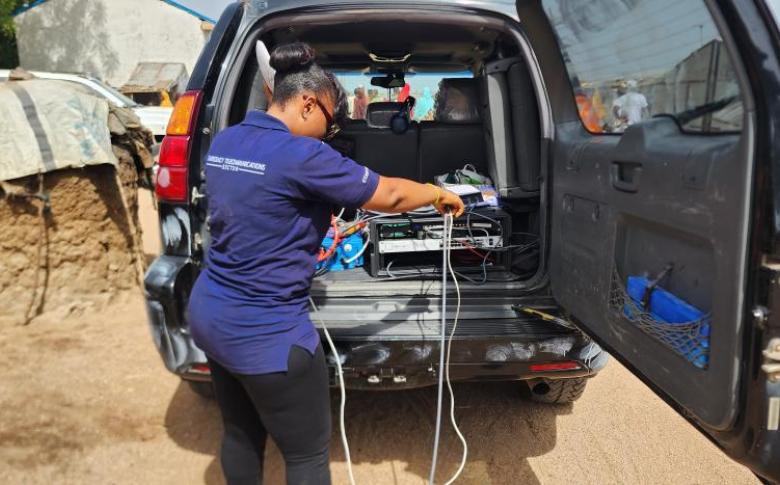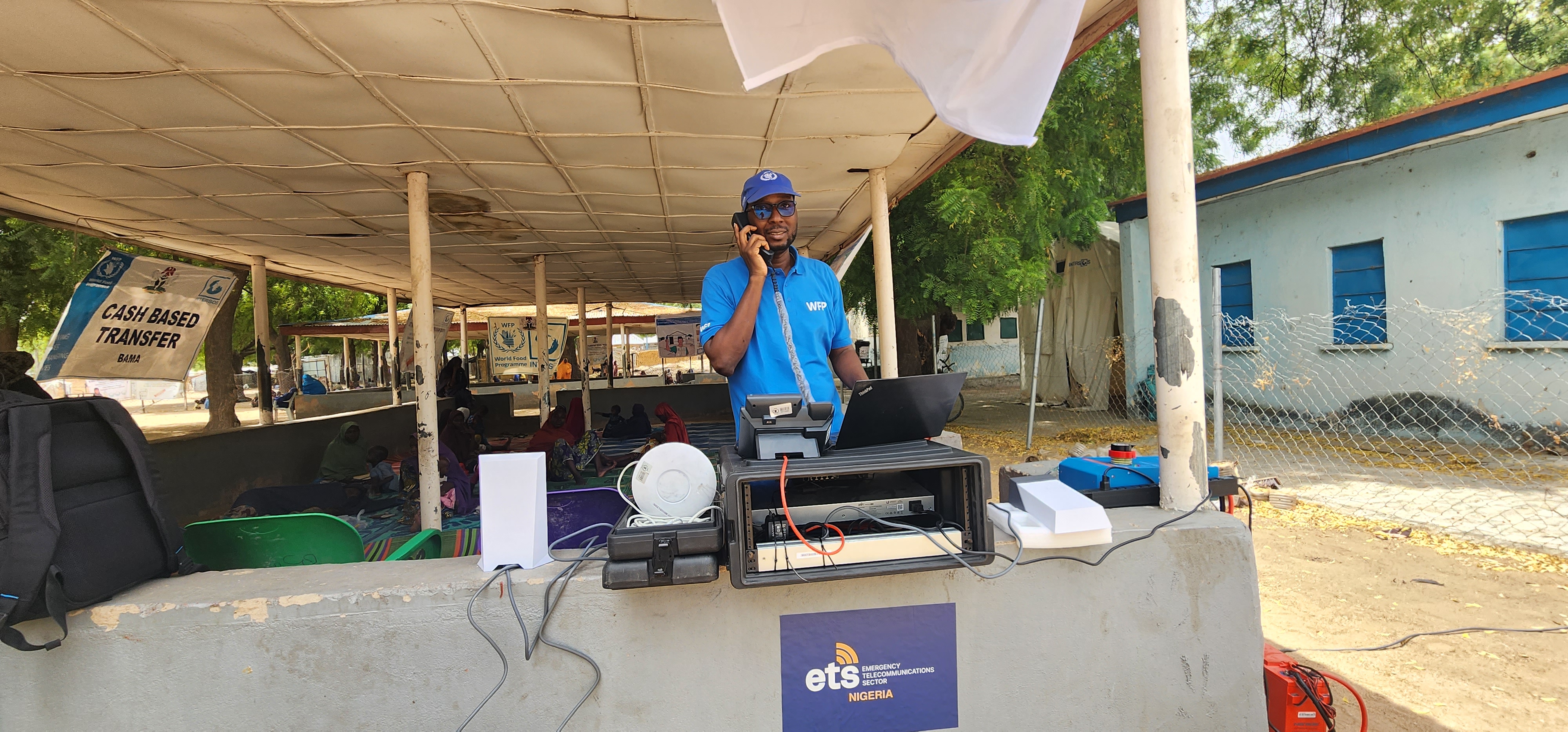What’s in the box? A novel solution for emergency connectivity in deep-field Nigeria

This story was originally published on ReliefWeb
A world of communication can be contained in just one box. This has recently been proved by the WFP-led Emergency Telecommunications Sector (ETS) in Nigeria. Technical specialists have developed an innovative solution―the CrisisNet kit―which can provide emergency connectivity for humanitarian responders, anytime, anywhere.
In North-East Nigeria, the ongoing humanitarian crisis continues to be one of the most severe and complex globally. Continued conflict in the region has resulted in an alarming and large-scale humanitarian and protection crisis, with millions of people pushed into survival mode.
As the situation grows increasingly urgent for millions of affected people, the ETS looks for solutions which can connect the humanitarian response faster, in areas which are unimaginably remote.
The CrisisNet kit is designed to replicate the communications systems set up in the eight humanitarian hubs across north-east Nigeria―with the exception that it is portable.
The capacity to connect responders, wherever they are, is critical in the context―Nigeria’s internet service providers moved out of deep field locations since the onset of the crisis in 2009 amid security issues. Without ETS services, key areas across Borno state in the north-east are connectivity black-out zones.
The ETS has developed an emergency kit in a moveable box consisting of a ready-to-deploy and adaptable internet connectivity kit that can serve humanitarians during critical times.
Caleb Anwara, ETS IT Operations Associate explains: “CrisisNet is a product developed to provide reliable and mobile connectivity to ease internet cut-out issues or even the total collapse of the existing network in deep field locations. This tool will be there during a disaster, shock, or emergency.”

The CrisisNet kit was pilot tested during a WFP Nigeria mission to the Internally Displaced Persons (IDP) camp in Gwoza earlier in 2023. From the camp, the team used the kit to hold a live video conference call with WFP Berlin, WFP Nigeria Country Office, the Maiduguri Area Office, and WFP HQ based in Rome to capture real time information in the IDP camp and to broadcast a focus group discussion with women living in the IDP camp.
“It was great to connect with colleagues around the world while we were in the camp in deep field Nigeria”, says Chi Lael, WFP Nigeria Head of Communications and Advocacy.
Chi continues, “The internet connection was strong, everybody could see us, the communication was clear without interference, we could see people’s comments. We were able take a virtual tour around the camp and show everyone who we were talking to and where we were walking to during the live video call.”
The CrisisNet kit was deployed a second time in August 2023 to enable live broadcasting of a UNOCHA training session in Yola and Damaturu to online participants.
“What a great initiative. Live broadcast of the training from the field brought a special element to our learning. It can be used again in future trainings”, says a participant who joined online.
The possibilities for the CrisisNet kit to connect humanitarians are limitless.
Whether coordinating the distribution of relief items, building the capacity of responders, or connecting the field to global partners, the new ETS technology solution is there to step up to the occasion.